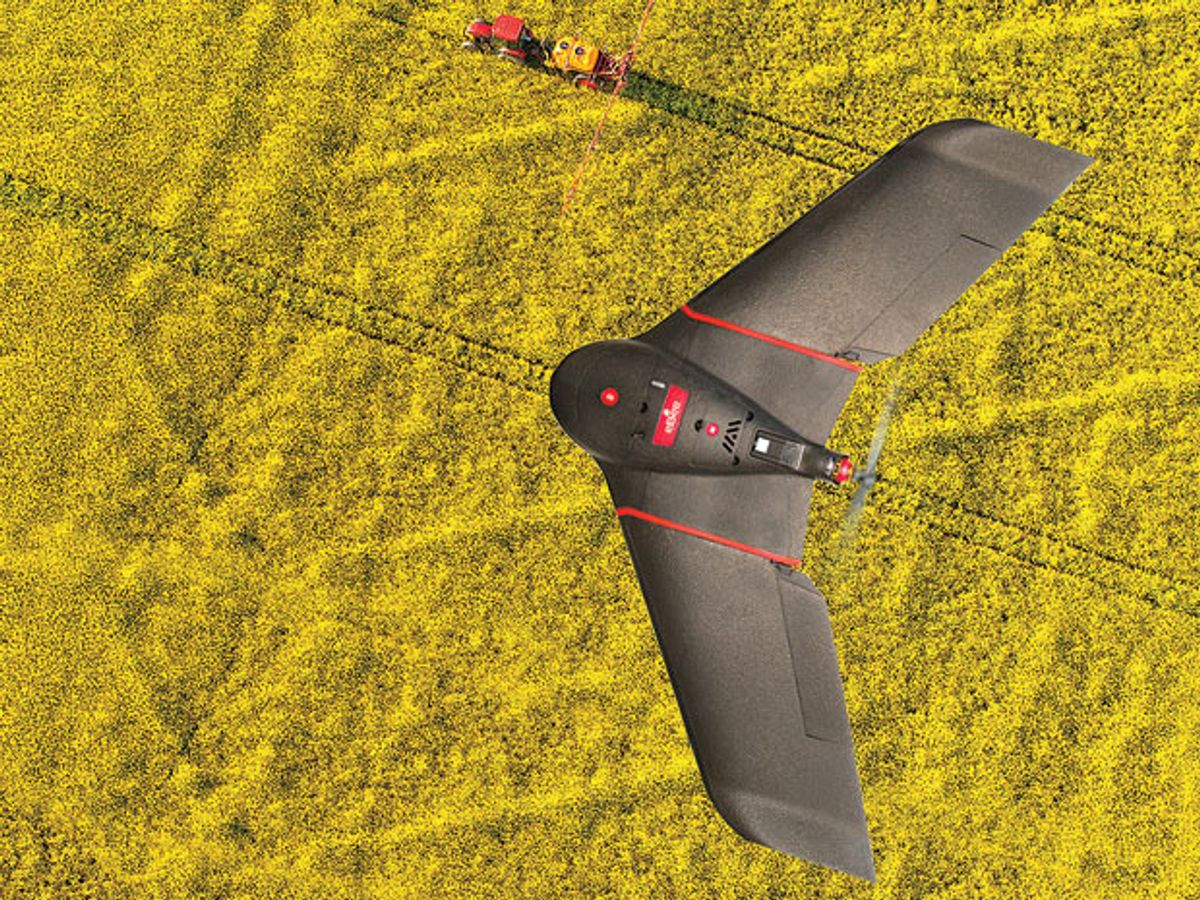Tech-savvy farmers have been some of the earliestcommercial adopters of drone technology, purchasing 45,000 drones last year alone. But if they were using the drones to check on the condition of their fields, spraying their crops, or keeping tabs on livestock, most of them were technically breaking the law. New U.S. federal rules that went into effect this summer, however, should make it easier for farmers to get a drone’s-eye view of their fields.
The new rules allow commercial drone operators to get certified via a written test, so long as they fly drones that meet certain weight and altitude guidelines. Before this, operators had to pay for a pilot’s license and get a special exemption to use a drone, a slow and cumbersome process.
The rules are a win for farmers, drone companies, and everyday consumers. Worldwide, agriculture is the largest commercial market for unmanned aerial vehicles, or UAVs. And it is expected to bag 80 percent of all commercial drone use in the United States. About half of the 5,500 exemptions that the U.S. Federal Aviation Administration (FAA) has approved up to now were for agricultural purposes, says Brian Wynne, president and CEO of the Association for Unmanned Vehicle Systems International. With the new rules, the FAA expects more than 600,000 commercial UAVs to be flying during the next year. “These numbers foreshadow the exciting potential that UASs [unmanned aircraft systems] have for the agriculture industry now that the small UAS rule is in place,” Wynne says.
By using drones to scout for weeds and pests, spot diseased plants or dry areas, and spray the right amount of fertilizer and pesticide, farmers can increase yield with less resources and environmental harm. Returns are especially steep for high-value crops like wine grapes. Drones are cheaper than hiring a small plane and, in contrast to satellites, work in cloudy conditions and give higher-resolution images. Prices for ready-to-fly agricultural UAV systems—hardware, sensors, and software included—range from US $1,500 to over $25,000.
“This is going to have a big impact on farmers,” says Kyle Miller, an applications engineer at agricultural drone maker AgEagle Aerial Systems, in Neodesha, Kan. Miller, who has been flying robotic aircraft over his family’s soybean farms as a hobbyist for years, says interest in the technology among farmers he knows is soaring. “Now that the new rules are out, farmers know drones are coming to their area,” he says.
Until now, many drone technology providers sat on the sidelines, not wanting to go ahead with drone testing or use given the lack of a clear regulatory path, says Nathan Stein, agricultural solutions manager at Swiss drone maker senseFly. “Whether it was a seed company or chemical company, their legal departments wouldn’t let them move forward,” he says. “Anything with the word drone in it was ominous.”
Several U.S. businesses have focused on operations in other countries. Drones have been used legally for agriculture for more than 20 years in countries such as Australia, Japan, and South Korea, according to Wynne. “Now companies can bring business and technology back into the United States,” Stein says.
Plus, American farmers might reap more benefits from drones than farmers in other countries. “The United States has incredibly diverse agriculture, from peaches to corn to grapes to cotton,” Stein says. What’s more, he says, U.S. farmers have “an adventurous spirit, so I expect a large market. People might come up with more creative ways to use drones on the farm.”
With pressure mounting on the FAA from stakeholders, UAVs are poised to have an even bigger impact on agriculture. Current rules limit commercial drones to less than 55 pounds (25 kilograms), a maximum speed of 100 miles per hour (160 kilometers per hour), and an altitude of 400 feet (122 meters). They also must not fly above people and remain within the operator’s visual line of sight.
That last rule is a killer for agriculture and other economic uses. Farms in the United States—think midwestern corn and soy expanses—are often much bigger than line-of-sight operation will allow for. There are around 2.1 million farms in the country. Of those, the 1.85 million or so smaller family farms (averaging 93 hectares) that make up about half the total U.S. farm acreage can benefit from drones right now. The same isn’t true for larger farms, which account for 36 percent of total U.S. farmland.
The FAA is moving in the right direction, but it needs to do more, says Darryl Jenkins, chairman of the American Aviation Institute, an independent think tank for commercial aviation based in Washington, D.C. “Things move at a glacial speed at the FAA,” Jenkins says. “To really get economic benefits from drones, we need beyond-line-of-sight operations, flights over people, and access to higher altitudes.”
Perhaps then, like tractors and combines, drones might become standard farm equipment.
